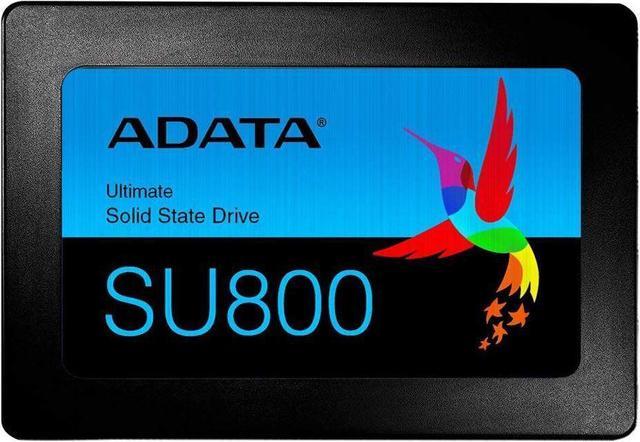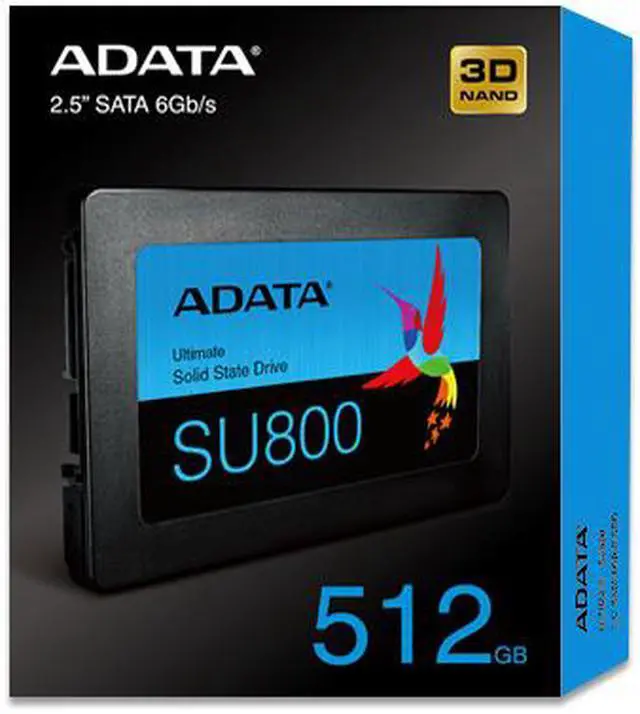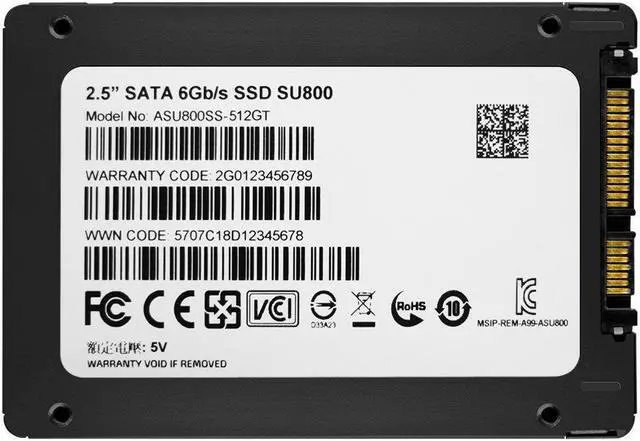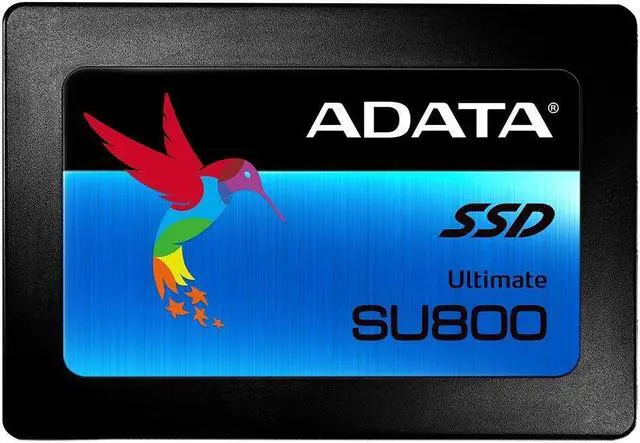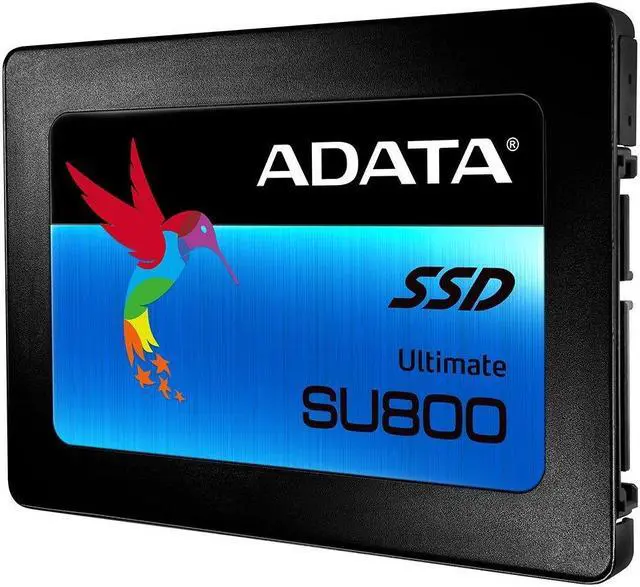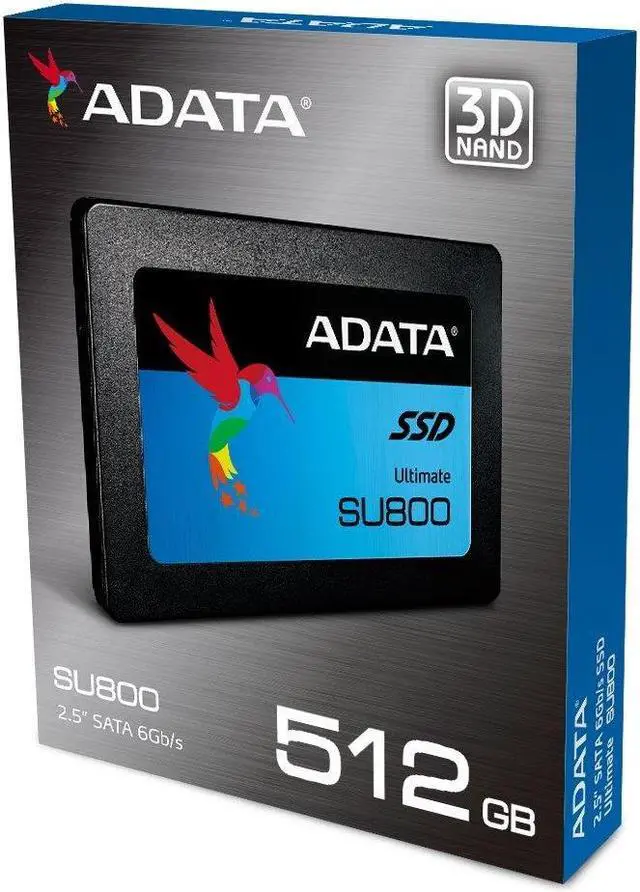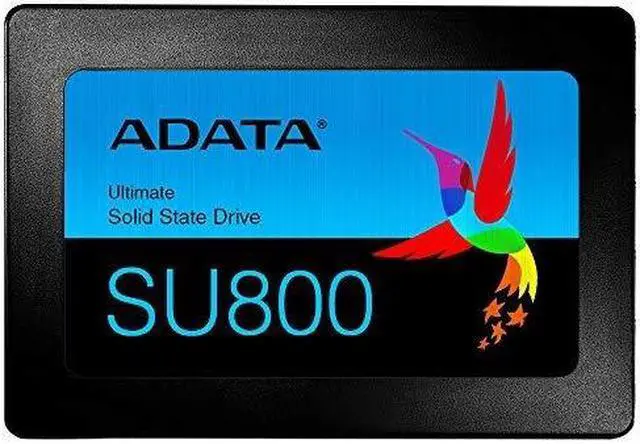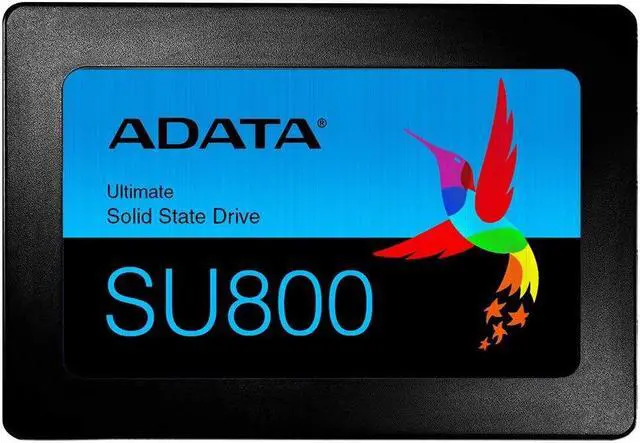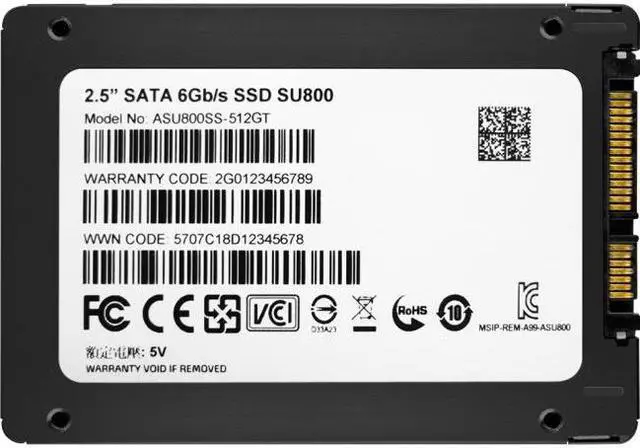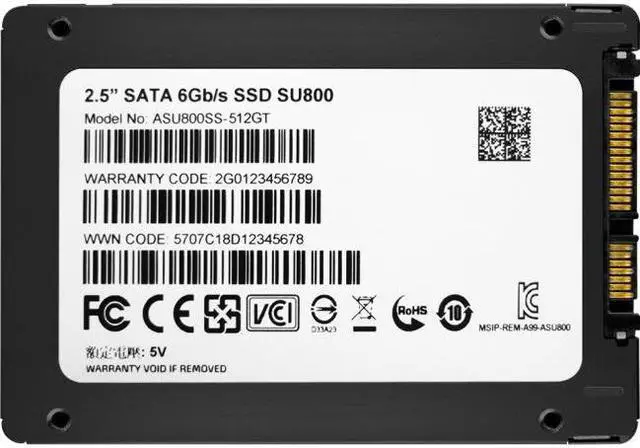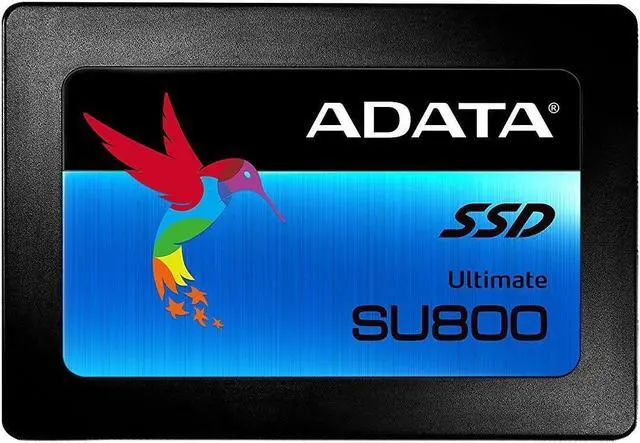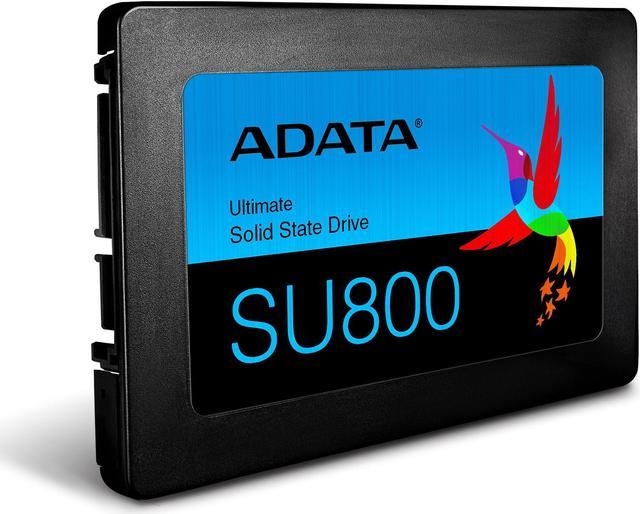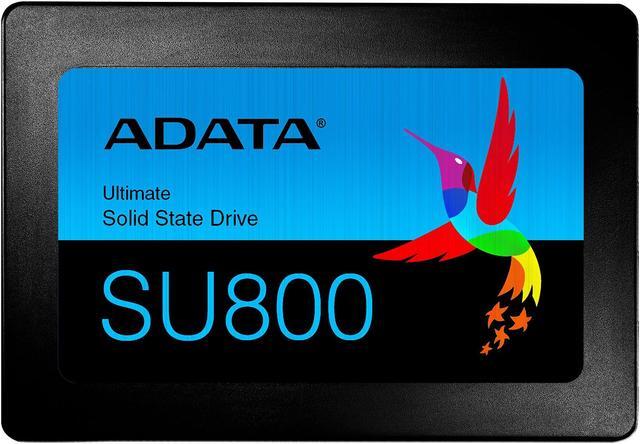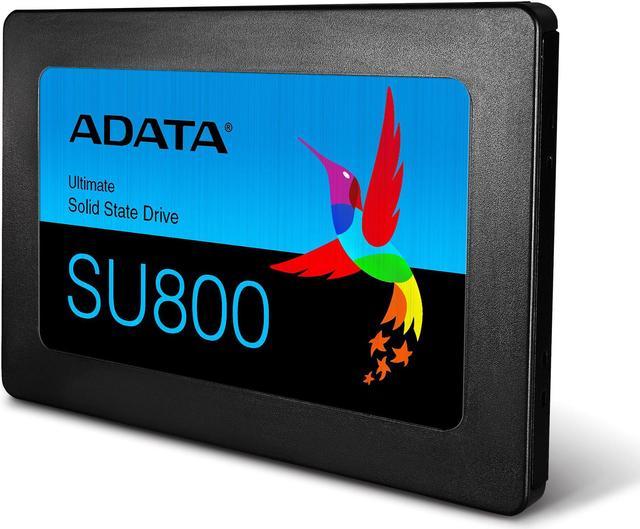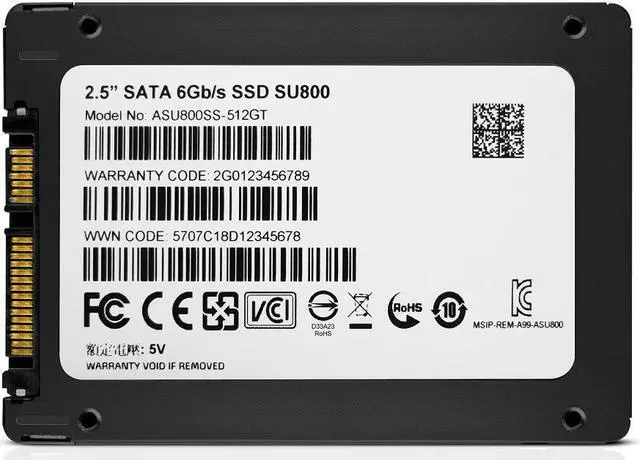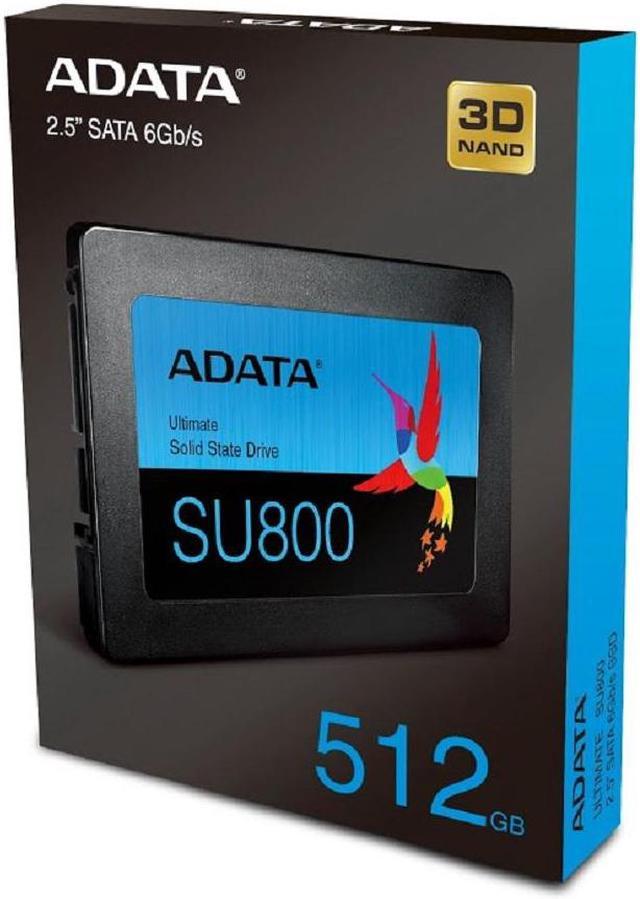Ultimate SU800 Solid State Drive 3D SSD Taken To Ultimate The SU800 solid state drive lives up to its Ultimate name with 3D NAND Flash that provides higher storage density, efficiency, and reliability than traditional 2D NAND. It features intelligent SLC caching and a DRAM cache buffer to boost read/write performance even further. Featuring LDPC ECC and technologies such as high TBW (total bytes written) and DEVSLP (Device Sleep), the Ultimate SU800 instantly upgrades notebook and desktop PCs with superior stability, durability, and power efficiency. In addition, users can download ADATA in-house developed SSD Toolbox and Migration Utility software for free to enjoy easy data management and migration.New generation 3D NAND Flash Implementing advanced 3D NAND Flash, the Ultimate SU800 features bigger storage capaciti...Storage Capacity: 512 GBMaximum Read Transfer Rate: 560 MB/sMaximum Write Transfer Rate: 520 MB/sWireless LAN: NoDrive Interface: SATADrive Interface Standard: SATA/600Color: BlackDrive Type: InternalDrive Width: 2.5Height: 0.3"Width: 2.8"Depth: 4"Weight (Approximate): 1.68 ozDevice Supported: NotebookDevice Supported: Desktop PCEnvironmentally Friendly: YesEnvironmental Certification: WEEEEnvironmental Certification: China RoHSEnvironmental Certification: RoHSLimited Warranty: 3 Year"
